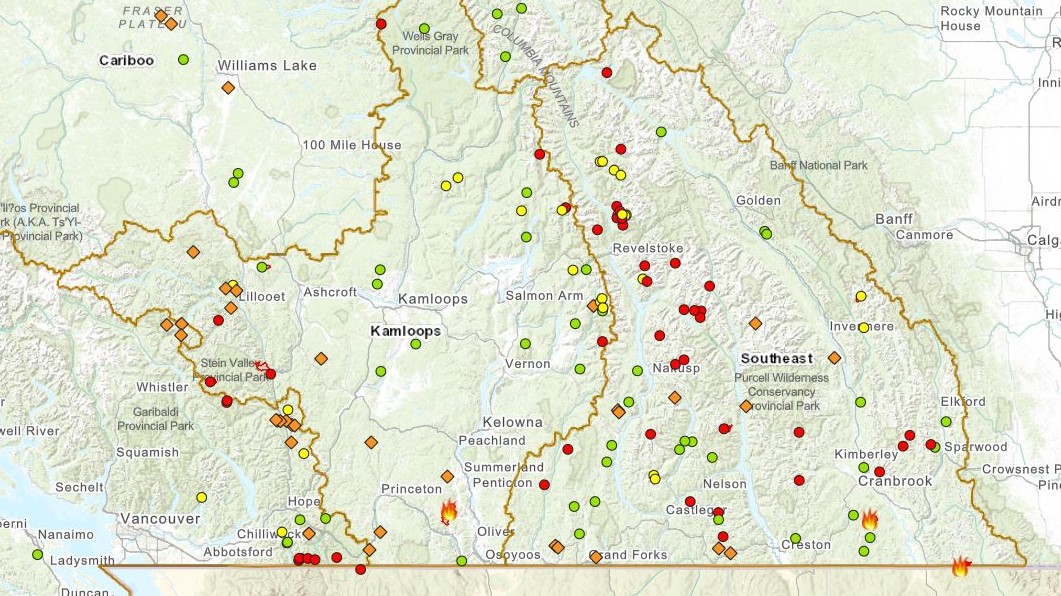It’s been a hectic two weeks for wildfire crews in B.C.’s Southeast Fire Centre.

Last week, ongoing thunderstorms rolled across the southern half of B.C., with 3,155 lightning strikes recorded.
This week it was more of the same, only with double the number of lightning strikes thus far — 7,100 — in the Coastal, Kamloops and Southeast Fire Centres.
Of those three, the Southeast currently has the most active fires at 84 — double that of the Kamloops Fire Centre (37), with the Coastal zone at 48.
Elsewhere, the Northwest Fire Centre has 17 active fires while Prince George has 39 and the Cariboo 13.
Lightning strikes per fire zone, Aug. 14-20
- Coastal Fire Centre: 1,165 total strikes
- Kamloops Fire Centre: 709 total strikes
- Southeast Fire Centre: 1,281 total strikes
Lightning strikes per fire zone, Aug. 21-25 (to 1:51 p.m., PT)
- Coastal Fire Centre: 414 total strikes
- Kamloops Fire Centre: 3,251 total strikes
- Southeast Fire Centre: 3,435 total strikes

In the Southeast Fire Centre, a large portion of the fires is within the Columbia Mountain Range.

Get daily National news
“We’ve been holding steady for about the last three days,” said BC Wildfire Service information officer Donna MacPherson. “Crews are putting out fires pretty much at the same rate as the new ones show up.”
MacPherson said the fire centre is experiencing more than 10 new wildfires a day. For example, within the last 24 hours, 17 new fires were called in while 18 other fires were put out.
“We had those lightning storms that started on Aug. 19,” said MacPherson. “In the Revelstoke area, we had 45 fires and we put out 30. We have 15 remaining at this time.”

Of those 15, seven are located in high elevations, where BCWS says they don’t pose a threat. Of the remaining eight, they are “being attacked in priority order.”
MacPherson said, “the crews don’t stop, but they also know which fires are the most important ones to focus in on.”
BCWS uses lightning locator maps to identify possible fires after a thunderstorm. It’s not exact, as sometimes a fire from a lightning strike can take time to build where it’s noticeable.
“They’ll either send out a fixed-wing (plane) or a helicopter looking for smoke,” said MacPherson. “And, of course, we also rely on the public to report them as well.”

Once a fire is spotted, it’s then gauged in regard to location and potential public danger. For example, MacPherson mentioned two small fires above Grand Forks that happened to be at lower elevations. Because of those two aspects, they were quickly actioned and put out within 24 hours.
“That’s the kind of prioritization that’s done,” said MacPherson. “What kind of fire is it, and what kind of risk it poses to people.”
Looking ahead, there may be some relief for firefighters in the Southeast, but it’ll be sparing. Environment Canada issued a severe thunderstorm watch for parts of the Southern Interior, though some rain may fall.
However, more hot weather is in the forecast next week, so any rain that does fall will soon evaporate.
To date this year, the Southeast Fire Centre has had 317 fires. Last year to date, the region had 349 fires. Both are up from the 10-year average of 265.





Comments